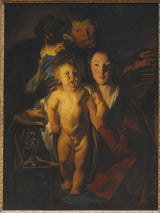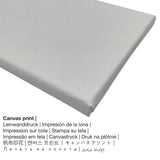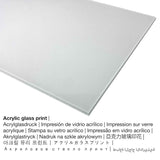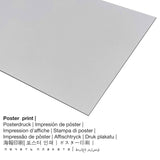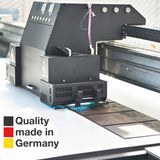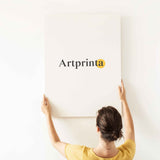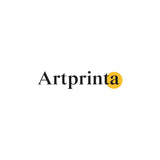Jacob Jordaens, 1622 - Ezinụlọ Nsọ - mbipụta nka mara mma
Ụtụ gụnyere. Mbupu gbakọrọ na ndenye ọpụpụ.
Background information on the artpiece created by the old master named Jacob Jordan
a 17th narị afọ eserese akpọrọ Ezinụlọ Nsọ bụ onye na-ese ihe nkiri baroque sere ya Jacob Jordan in 1622. Ọrụ nka tụrụ nha: Ogologo: 122 cm (48 ″); Obosara: 92 cm (36,2 ″) Ekebere: Elu: 150 cm (59 ″); Obosara: 120 cm (47,2 ″); Omimi: 13 cm (5,1 ″) and was painted with oil. The work of art is in the the digital collection of National Museum nke Stockholm. a nka ochie artpiece, nke dị na ngalaba ọha a na-enye ya site n'ikike nke Nationalmuseum Stockholm na Wikimedia Commons.Ebe E Si Nweta nke ihe osise:. Kedu ihe ọzọ, nhazi nke mmepụta dijitalụ dị n'ime Eserese usoro na a akụkụ ruru nke 3: 4, meaning that the length is 25% shorter than the width. The painter Jacob Jordaens was an artist from the Netherlands, whose style was mainly Baroque. The Dutch artist lived for a total of 85 afọ - born in 1593 and deceased in the year 1678 in Antwerp.
Họrọ nhọrọ ihe ebipụta nka
In the dropdown selection next to the product you can select your individual size and material. We allow you to pick your favorite size and material among the following product individualization options:
- Kwaaji: A printed canvas material mounted on a wooden frame. A canvas print has the advantage of being relatively low in weight, which means that it is easy and straightforward to hang up the Canvas print without any wall-mounts. That is why, a canvas print is suited for any type of wall.
- Mbipụta nke aluminom: These are metal prints on aluminium dibond with an outstanding depth effect, which creates a modern impression by having a surface , which is non-reflective. The colors are luminous, the fine details are clear and crisp. The print on Aluminum Dibond is the most popular entry-level product and is a stylish way to showcase art prints, since it puts 100% of the viewer’s focus on the image.
- Bipụta akwụkwọ mmado n'ihe kwaaji: The poster print is a UV printed sheet of flat cotton canvas paper with a slightly rough surface structure. A poster print is suited for putting the art copy in a custom-made frame. Please bear in mind, that depending on the size of the poster print we add a white margin of something between 2 - 6cm round about the print in order to facilitate the framing with your custom frame.
- Bipụta na iko acrylic (nke nwere ezigbo mkpuchi iko n'elu): The print on acrylic glass, often labelled as a plexiglass print, changes your favorite original work of art into beautiful wall decoration. The work of art is being made thanks to state-of-the-art UV print machines. It creates stunning, vivid color tones. Our plexiglass with real glass coating protects your custom fine art print against sunlight and external influences for up to 6 decades.
Ederede iwu dị mkpa: We try our best in order to depict the products as clearly as possible and to exhibit them visually on the respective product detail pages. Please bear in mind that the colors of the printing material, as well as the imprint can vary to a certain extent from the representation on the screen. Depending on your settings of your screen and the quality of the surface, colors might not be printed 100% realistically. Since all the art prints are processed and printed by hand, there might as well be minor deviations in the size and exact position of the motif.
Ngwaahịa a
| Nkewa bipụta: | ọrụ mgbidi |
| Usoro mmeputakwa: | dijitalụ mmeputakwa |
| Usoro mmepụta: | Mbipụta UV ozugbo (mbipụta dijitalụ) |
| Nlụpụta: | German mmepụta |
| Ụdị ngwaahịa: | a na-achọ |
| Ngwaahịa were: | nka mgbidi, mkpokọta nka (mmeputakwa) |
| Nhazi: | nhazi ihe osise |
| Ụdị anya: | 3: 4 ogologo: obosara |
| Akụkụ onyonyo pụtara: | ogologo bụ 25% mkpụmkpụ karịa obosara |
| Nhọrọ dị: | akwụkwọ mmado (akwụkwọ kwaaji), mbipụta ọla (aluminium dibond), mbipụta kanvas, mbipụta iko acrylic (nwere ezigbo mkpuchi iko) |
| Nhọrọ nke akwa akwa n'elu etiti ihe ndọtị (mbipụta akwa akwa): | 30x40cm - 12x16", 60x80cm - 24x31", 90x120cm - 35x47", 120x160cm - 47x63" |
| Mbipụta iko acrylic (nwere ezigbo mkpuchi iko) dị iche iche: | 30x40cm - 12x16", 60x80cm - 24x31", 90x120cm - 35x47", 120x160cm - 47x63" |
| Mpempe akwụkwọ mmado (akwụkwọ kwaaji) nha: | 30x40cm - 12x16", 60x80cm - 24x31", 90x120cm - 35x47" |
| Nhọrọ Dibond (ihe alumnium) nhọrọ: | 30x40cm - 12x16", 60x80cm - 24x31", 90x120cm - 35x47" |
| Nhazi nke nka nka: | na-enweghị etiti |
Data nka ahaziri
| Aha nke ọrụ nka: | " Ezinụlọ Nsọ" |
| Nhazi nka: | sere |
| Okwu mkpokọta: | nka ochie |
| Nhazi oge: | 17th narị afọ |
| Year: | 1622 |
| Afọ nka: | ihe karịrị afọ 390 |
| Ọkara nke ihe osise izizi: | mmanụ |
| Nha ihe osise izizi: | Ogologo: 122 cm (48 ″); Obosara: 92 cm (36,2 ″) Ekebere: Elu: 150 cm (59 ″); Obosara: 120 cm (47,2 ″); Omimi: 13 cm (5,1 ″) |
| Ụlọ ihe ngosi nka: | National Museum nke Stockholm |
| Ebe ngosi nka: | Stockholm, Obodo Stockholm, Sweden |
| E Nwere na: | www.nationalmuseum.se |
| Ụdị ikike nka: | ngalaba ọha |
| Site n'aka: | Nationalmuseum Stockholm na Wikimedia Commons |
Banyere onye na-ese ihe
| Aha onye nka: | Jacob Jordan |
| okike onye nka: | nwoke |
| Nationality: | Dutch |
| Ọrụ nke onye na-ese ihe: | onye na-ese ihe |
| Obodo onye nka: | mba netherland |
| nhazi ọkwa: | nna ukwu ochie |
| Ụdị nka: | Baroque |
| Afọ ọnwụ: | 85 afọ |
| Afọ ọmụmụ: | 1593 |
| Afọ ọnwụ: | 1678 |
| Obodo ọnwụ: | Antwerp |
Nwebiisinka © - www.artprinta.com (Artprinta)
(© Nwebiisinka - nke Nationalmuseum Stockholm - National Museum nke Stockholm)
English: Jordaens’ down-to-earth rendering of the Holy Family embraces the most intimate qualities of Caravaggism. The lit candle held by a maidservant is supplemented by the light from the unseen fireplace at which Joseph warms his hands, situating the genre-like scene in the heart of winter, the season in which Jesus was born. Standing upright on Mary’s lap, the realistically portrayed Christ Child seeks the viewer’s attention, as if beckoning us to approach and join in the adoration. With motherly pride Mary presents Jesus. The knife in his right hand alludes to the Circumcision, the first occasion on which the Redeemer’s blood was shed for our sins, intended to encourage meditation on the Passion. Details of the iconography are derived from the visions of St Bridget of Sweden, who described the newborn Christ Child as the source of a bright supernatural light. Jordaens concretises this divine radiance emanating from the body of Jesus – “the light of the world” – as an unusually intense reflected light from the flame of the candle. Jordaens vardagliga gestaltning av den Heliga familjen avspeglar caravaggismens mest intima karaktär. Den genreartade scenen utspelar sig på vintern, tiden för Jesu födelse. Det tända vaxljuset i tjänstekvinnans hand kompletteras av en eldstad utanför bildrummet vid vilken Josef värmer sina frusna händer. Det realistiskt skildrade Jesusbarnet står i Jungfru Marias knä. Genom blicken söker han kontakt med betraktaren, som för att bjuda oss att komma närmare och ansluta i tillbedjan. Med moderlig stolthet visar Maria upp Jesusbarnet. Kniven i Jesusbarnets hand hänsyftar till omskärelsen, det första tillfället då Frälsaren utgjuter sitt blod för våra synder, och uppmanar därmed till begrundan av Kristi passion. Målningens ikonografi härrör delvis från den heliga Birgittas uppenbarelser. Hon beskrev det nyfödda Jesusbarnet – ”världens ljus” – som källan till ett starkt övernaturligt ljus. Jordaens konkretiserar här den gudomliga strålglansen i form av det intensiva reflekterade skenet från vaxljusets låga.

